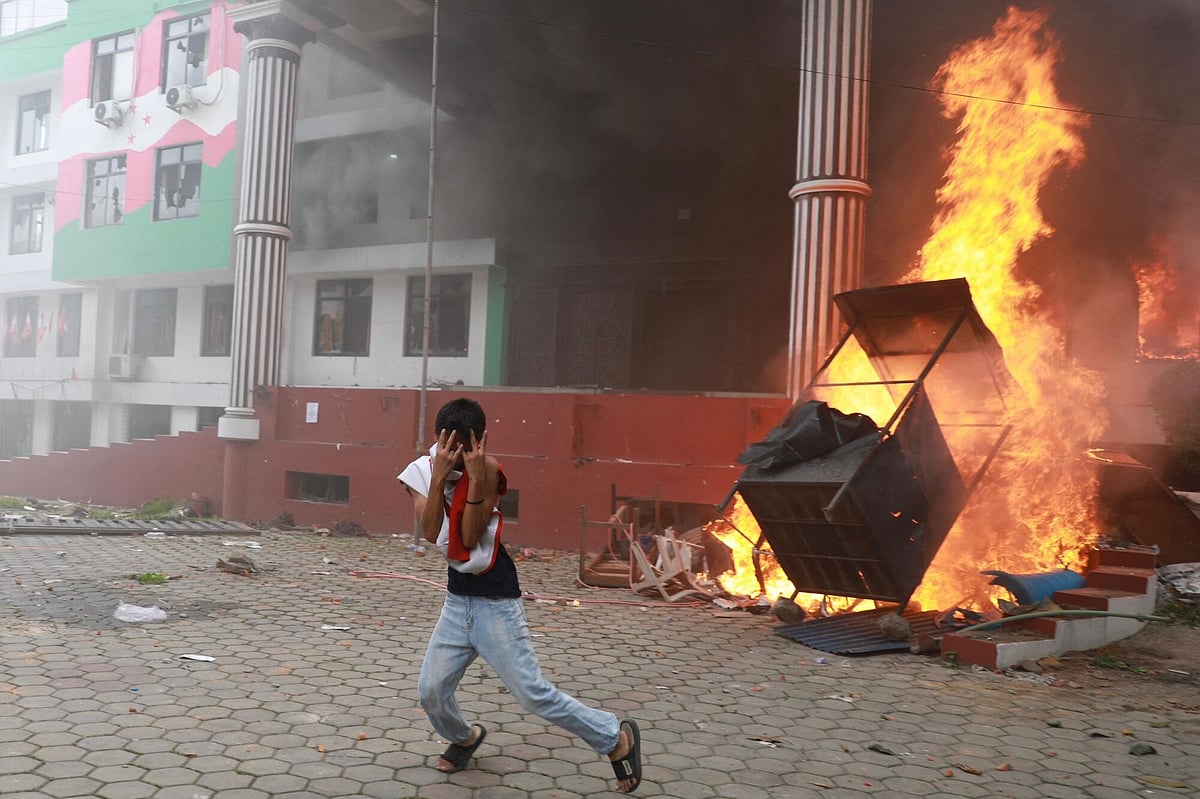Waves of unrest: South Asia’s fragile stability under strain
Youth anger, weak institutions, and economic shocks fuel recurring street protests

South Asia, home to nearly a quarter of humanity, has in recent years witnessed waves of popular unrest that have shaken governments and unsettled long-assumed certainties about political stability. These eruptions are not isolated accidents; they are linked by structural weaknesses common across the region — fragile economies vulnerable to external shocks, widening inequalities, narrow political elites, and youthful populations frustrated with limited prospects.
Immediate triggers have varied, from debt defaults and fuel shortages to repressive governance and corruption scandals, but the pattern is unmistakable: when livelihoods are scarce and voices silenced, people take to the streets. In all cases led by the youth there was mass mobilisation of the deprived, episodes of violent state response, and an uncertain, often halting sense of repair. The consequences — regime change, violence, and long-term economic damage — hold important lessons for countries within the region and beyond.
Political economy
There are also clear similarities in political economy. Each country entered the crisis with: weak public institutions, politicised law enforcement, a narrow elite controlling big economic rents, and large youth cohorts facing diminishing employment opportunities or stagnant wages. When governments failed to shield the poor and less privileged from price shocks or to credibly address corruption, mass grievance found an outlet in the streets.
Sri Lanka’s uprising, being the first, was the most dramatic: an island economy that defaulted on its sovereign debt in 2022 saw fuel, medicine and food disappear from shop shelves, power cuts become routine and inflation spike. Those shortages, and long-standing fiscal mismanagement, prompted mass street occupations in Colombo and provincial towns; protesters even stormed the presidential palace, forcing the president to flee and subsequently resign.
Young population
Bangladesh’s 2024 unrest arose from a different mix but with the same dynamics: concentrated industrial employment, a huge young population and political centralisation. The garment belts around Dhaka — Mirpur, Ashulia, Gazipur and others — are both economic engines and flashpoints. Workers and students repeatedly took to the streets demanding better wages, accountability and political space; strikes and factory shutdowns cost the industry hundreds of millions in lost orders and revenue, while the state response oscillated between limited concessions and heavy policing. The economic consequences rippled internationally because Bangladesh anchors global apparel supply chains.
Nepal’s recent upheaval is a reminder that fragile politics can be just as combustible. A broad youth-led movement — often organised online and in universities — escalated into nationwide protests against perceived corruption and elite impunity. The crackdown saw lethal force used against demonstrators, with investigations and resignations amid a national reckoning about governance. Nepal’s economy, heavily dependent on tourism and remittances and constrained by geography is now in further distress.
Immediate triggers
Immediate triggers differed only superficially. In Sri Lanka it was the abrupt exhaustion of foreign reserves and acute shortages; in Bangladesh it was labour and student demands colliding with a brittle political compact; in Nepal it was a social-media age outrage that exposed deeper corruption and patronage. What unites them is that a single shock converted simmering economic and political frustration into mass mobilisation in each country leading to the government’s ouster.
The violence that accompanied these movements also bears resemblance. In all three countries there were episodes of heavy-handed policing, clashes that escalated into arson and looting, and instances of live ammunition or other lethal force being used against civilians. The physical toll was matched by economic damage: tourism, manufacturing and foreign investment all suffered, and the cost of instability is measured not only in lives but in lost jobs and growth.
How governments coped varied. Sri Lanka accepted external oversight and conditional programmes to rebuild reserves and restructure debt while implementing painful price and subsidy adjustments. Bangladesh has relied on a mix of controls and selective concessions to business and labour, while the government seeks to reassure buyers and investors. Nepal’s authorities have been forced into inquiries, leadership changes and promises of reform — but deep institutional change remains uncertain.
Same lessons
Sri Lanka, Bangladesh and Nepal teach the same lesson in different accents: when fragile economies and captured politics collide with a shock, people will take to the streets — and the violence that follows damages lives and livelihoods for years.
Troubled and stifling conditions in some countries of the region make them susceptible to extra-constitutional changes. Escalating poverty rate, climate disasters, dismal social sector performances, widening income gaps, high inflation, balance-of-payments stress, lack of opportunities for the youth, and malnutrition are the indicators coupled with a polarised polity that create exactly the conditions that made Sri Lanka, Bangladesh and Nepal combustible. An April 2025 World Bank Development Report on South Asia believes it is ‘taxing times’ for the region.
Other South Asian countries are, therefore, not immune to unforeseen violence, which only a spark can trigger like in the other three cases. Some continue to block the internet and mobile phones as a panacea for containing citizens’ agitation. Little do they realise that such acts, in fact, have sparked violent revolt, as in the case of Nepal.
The responses chosen now will determine whether these countries follow or avoid the same convulsions. The safest bet for stability is to make the political and economic compact more inclusive, reduce poverty, and provide justice, so that discontent does not become irreversible.
Sajjad Ashraf served as an adjunct professor at the Lee Kuan Yew School of Public Policy at the National University of Singapore from 2009 to 2017. He was a member of Pakistan Foreign Service from 1973 to 2008 and served as an ambassador to several countries.
Network Links
GN StoreDownload our app
© Al Nisr Publishing LLC 2025. All rights reserved.